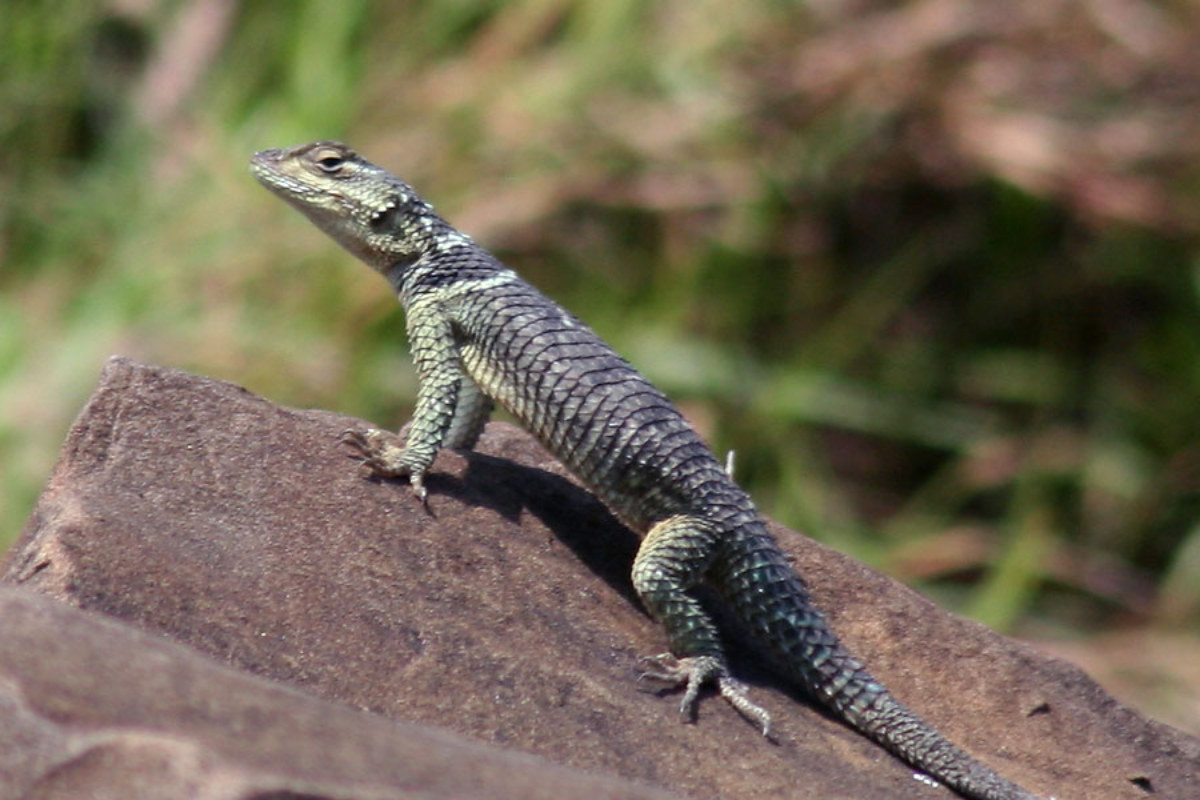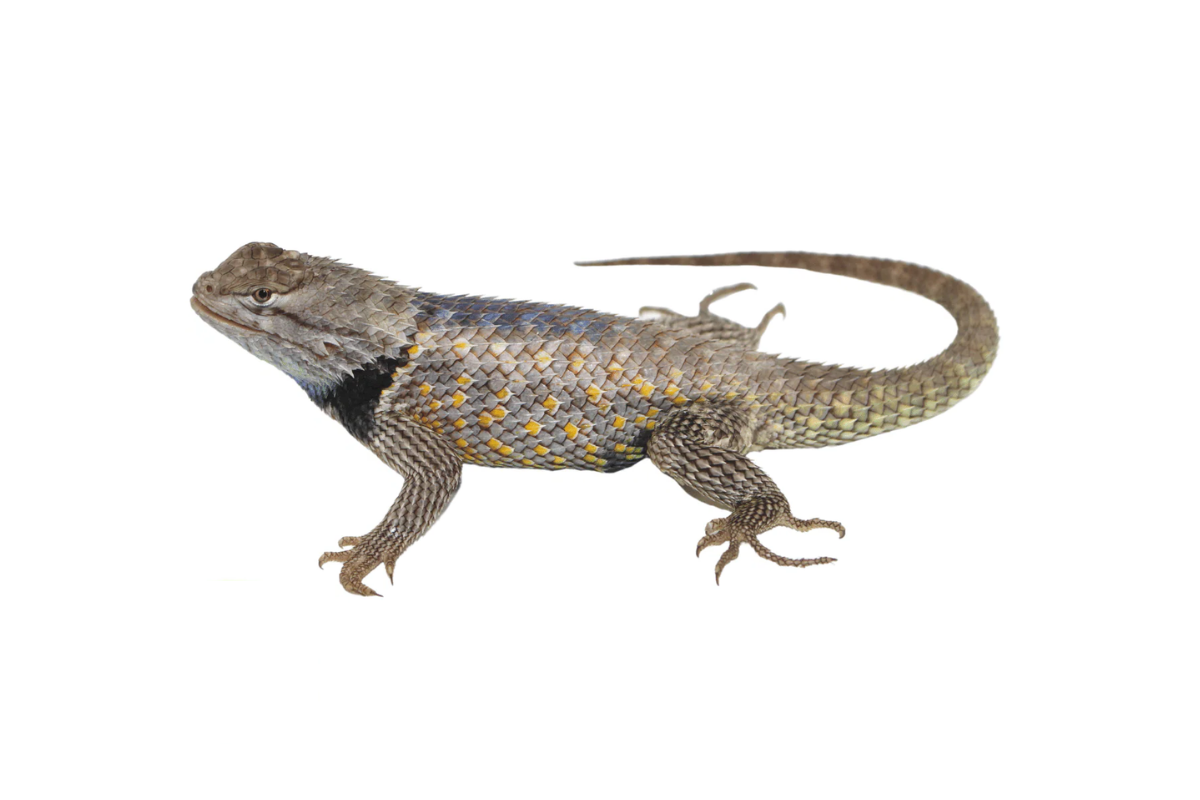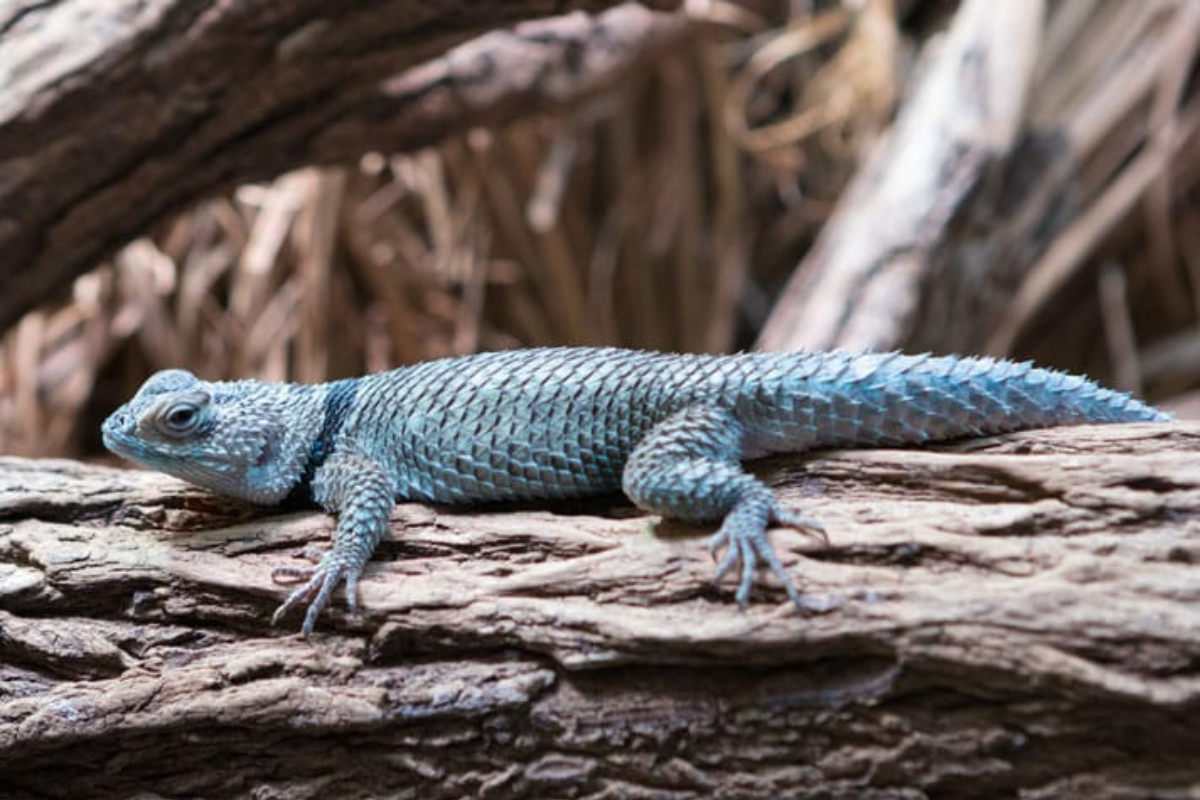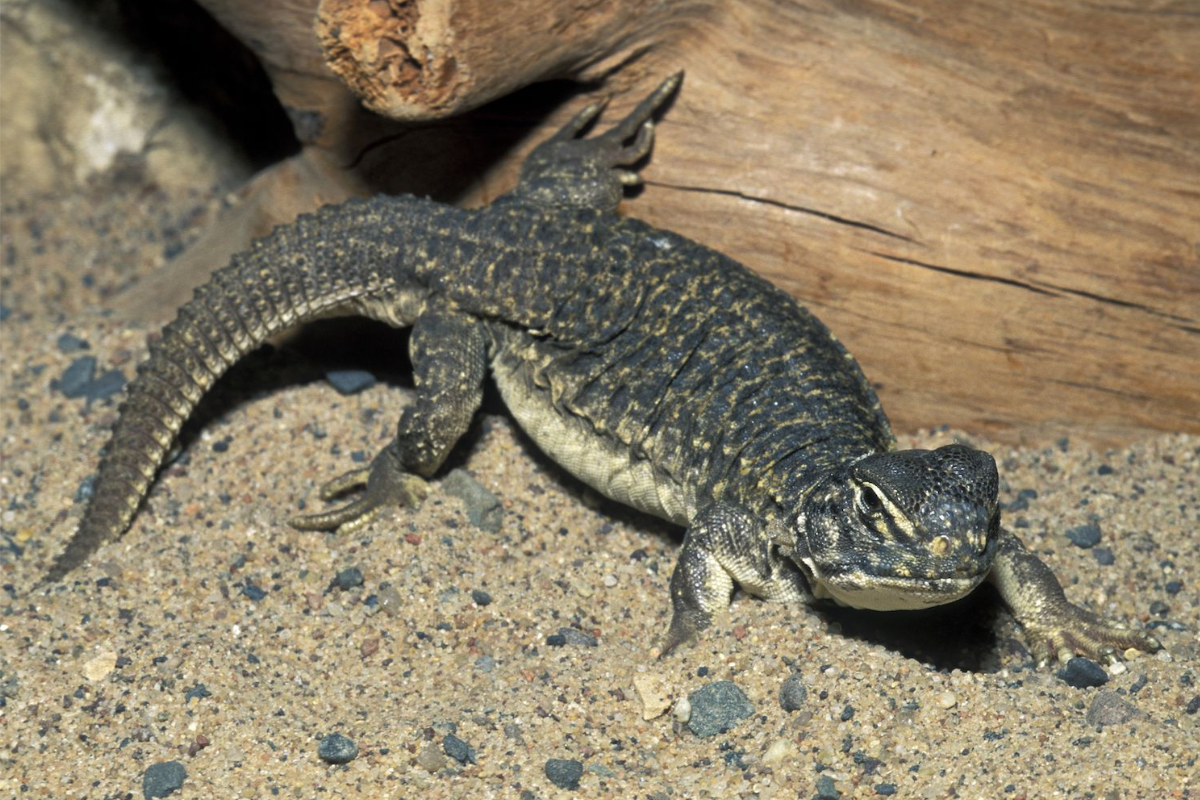In this picture, a guide who shares the essential tips for caring for a spiny lizard seems pleased to introduce us to his pet. Both lizard enthusiasts and potential lizard owners should find this piece functional as it describes almost everything necessary for keeping a pet lizard in good health. This guide will emphasize habitat, diet, behavior, activity, and health maintenance, among others, and expand on these areas with examples. We aim to make the reader knowledgeable enough to develop appropriate conditions for a spiny lizard that could be a family member. If you are new to the lizard or wish to further your existing knowledge of lizards, this guide does not disappoint; it covers, quite adequately, the primary and more complex principles that together guarantee the health of your lizard.
How to Care for a Spiny Lizard as a Pet?

To keep the spiny lizard in good condition, it is essential to keep their habitat, food, and healthcare needs in check. First, create a large terrarium with plenty of hiding spaces and climbable structures. Also, heat the terrarium with basking lights and a UVB bulb to maintain a temperature of 75-95 degrees for optimal thermoregulation and calcium uptake. Second, crickets, mealworms, and vitamin dust should be the main components of the live insect diet. Lastly, changes in behavior, lack of appetite, and other illnesses should be treated with a vet checkup regularly to prevent some of the most common conditions, such as metabolic bone disease and parasite infestation. Following these instructions will give the spiny lizard an appropriate environment to grow and develop.
Setting Up the Ideal Terrarium for Your Spiny Lizard
Establishing a suitable habitat for my spiny lizard involves the selection of a terrarium that is at least twenty gallons in size when it is just one lizard, as in my case. I make sure to include several features in their wild habitat, such as climbing structures, rocks, and many shelters, to make them feel secure and less anxious. I use basking bulbs and UVB bulbs and ensure that the temperature range is from 75 to 95 degrees with the aid of these bulb,s which encourage natural behaviors and thermoregulation. Choosing the suitable substrate is also relevant, and I would go for a combination of a natural reptile carpet or soil that does not trap dirt and bacteria. In addition, I ensure that the humidity is not too low or too high by keeping it between thirty and fifty percent by misting once in a while or using shallow water troughs. These staged choices assist in building a terrarium that helps with my pet’s spiny lizard’s physical and mental well-being.
Temperature and Lighting Requirements
Ensuring optimal temperature and lighting conditions is critical for the health and well-being of spiny lizards, as these factors directly influence their metabolic processes and behavior. To achieve proper thermoregulation, maintain a temperature gradient within the terrarium ranging from 75°F (24°C) to 95°F (35°C). This gradient allows the lizard to thermoregulate between cooler and warmer areas. Utilize basking lights to create a warm basking spot that reaches the higher end of this range, which is essential for activities such as digestion and natural behaviors.
In addition to heat, spiny lizards require exposure to UVB lighting, which is crucial for calcium absorption and preventing metabolic bone disease. Position a UVB bulb that covers at least two-thirds of the enclosure while ensuring it is within 12 to 18 inches of the basking area. A 10-12% UVB tube or a compact bulb is recommended as an appropriate UVB source. Renewable lighting fixtures every 6-12 months to ensure consistent UVB output. Adhering to these technical parameters provides an environment that effectively meets your spiny lizard’s physiological needs.
Choosing the Right Substrate for a Healthy Environment
An appropriate substrate is vital for maintaining a hygienic and suitable habitat for your spiny lizard. The substrate should replicate the lizard’s natural settings while ensuring ease of cleaning and safety. It’s recommended to use a mix of organic topsoil and sand or a high-quality reptile carpet, which is both natural and easily maintained. Technical parameters suggest maintaining a substrate depth of 2-4 inches to allow for natural behaviors like digging and burrowing. Avoid substrates like wood chips or gravel, which can lead to impaction if ingested. Moreover, to ensure an optimal humidity level, consider incorporating moist substrates or using an appropriate misting system to maintain a relative humidity of about 30-50%. These guidelines help foster a healthy environment for your pet, accommodating its physical activity needs and hygienic expectations.
What Do Spiny Lizards Eat?

Spiny lizards’ primary diet is composed of live insects, which are a good source of nutrition. Crickets and mealworms are a source of protein. Make sure the crickets and mealworms are calcium and vitamin D3-enriched by dusting them before feeding them to your spiny lizard. Others include waxworms and roaches, which can be provided occasionally. A well-balanced diet is the most essential thing one must never forget while looking after their spiny lizards. Along with the meal, fresh, clean water is necessary. Following the simple dietary precautions recommended above for your pet lizard can improve nutritional deficiencies and lifespan.
Feeding Your Spiny Lizard Effectively
For my spiny lizard, I follow the diet of feeding crickets and mealworms as primary food; I habitually dust such insects with calcium and vitamin D3 to improve their nutritional inadequacy. This is very important in averting issues such as metabolic bone disease. Occasionally, I add variety to the scope by providing waxworms or roaches, among other insects. Moreover, fresh water is provided daily to avoid dehydration for my lizard. By adhering to these dietary habits suggested by prominent authorities, I believe I am helping my pet’s healthy growth and development.
How to Use for Balanced Nutrition
To sustain a balanced nutrition plan for my spiny lizard, it is essential to incorporate a variety of live insects into the diet. I concentrate on crickets and mealworms, supplemented with powdered calcium and vitamin D3 for better bone health. The technical parameter I maintain is a calcium-to-phosphorus ratio of approximately 2:1, which is crucial in avoiding nutritional deficiencies. The times vary, but the average feeding of ash lizards is about three to four times a week. As a change, I sometimes alternate between waxworms and roaches or the other way around, and also, around the time when there is active or fast growth, a lot of waxworms or insects can be offered. Further, I ensure that I place a shallow dish with fresh, clean water so they can drink it anytime. These practices and expert advice are the essentials that assist me in creating balanced pet nutrition.
Understanding Why Your
It is easy to try and diagnose health issues or behavioral changes in your spiny lizard by pointing to its diet or living conditions. These concerns might pertain to particular details of its maintenance. For example, if the problem is with the lizard’s activity level or its looks, it would be good to check and adjust, if needed, the temperature gradient within the terrarium. Maintaining a temperature range of 75 to 95 is very important for thermoregulation. Another focal point is to ensure sufficient UVB light since insufficient UVB (for instance, from a 10-12% UVB source positioned 12-18 inches from the basking area) can lead to metabolic bone disease. There are many other steps one may take, for example, see that the insects fed have enough calcium and vitamin D3 such as the 2:1 ratio of calcium to phosphorus. 3-4 times a week is ideal for this type of resident but ranged components such as waxworms can be included to provide more opportunities for variation. These technical parameters should aid you in resolving the issues that are detectable in the behavioral and health status of the spiny lizard – if these parameters do not seem to be overstressed or unreasonable to the animal’s physiology.
Understanding the Behavior of Spiny Lizards

Spiny lizards exhibit specific behaviors that are crucial to understand for adequate care and management. These behaviors include basking, which is essential for thermoregulation, and hiding, which reflects their instinct to seek safety. They are typically diurnal, meaning they are active during the day, which aligns with their need for UVB exposure. Territorial behavior may be exhibited, especially in males, who can become aggressive if housed with other males, necessitating individual housing or careful supervision if kept in groups. During observation, note any significant changes in activity levels or interactions with their environment, as this may indicate stress or health issues. By being well-versed in these behavioral patterns, you can create a more accommodating enclosure and respond effectively to your spiny lizard’s needs.
Why and How to Provide Hiding Spaces
Providing hiding spaces for your spiny lizard is imperative to mimic its natural habitat and reduce stress. Hiding places serve as shelters where the lizard can retreat, offering a sense of security and allowing for natural behavioral patterns. Incorporating varied and suitable hiding locations within their enclosure supports their mental and physical well-being.
To achieve this, multiple hiding spaces using materials such as bark, rocks, or commercially available reptile hides are essential. These structures should be distributed at different temperature zones within the terrarium to accommodate the lizard’s thermoregulatory behaviors, ensuring access to more relaxed and warmer retreats. The size of these hiding spaces should comfortably fit the lizard’s body, allowing easy entry and exit while not being too large to cause discomfort or insecurity.
Key technical parameters to consider include ensuring that the hides are positioned in areas that will not obstruct the generally required temperature gradient of 75°F to 95°F and don’t block UVB lighting exposure needed for health. Securely placed and appropriately sized hiding spaces contribute to an enriched environment, fostering natural behaviors and promoting your spiny lizard’s overall health and happiness. By integrating these elements based on expert advice, you can effectively support your pet’s well-being.
Recognizing Signs of Stress in a Spiny Lizard
I identify stress in my spiny lizard since there are a few tell-tale signs. I start with closely observing appetite since dramatic changes like a reduction in eating can indicate stress and health problems. Further, atypical behaviors like prolonged hiding, increased assertiveness, and being inactive may also signify environmental inadequacy. Color changes are also associated with stress since they indicate mood changes or discomfort. Using these strategies enables me to effectively adjust the parameters of the lizard’s habitat, including temperature and light intensity, hence reducing the stress levels in the lizard. Working on such strategies, which are recommended by experts, in advance helps me accomplish not only great but lasting benefits in the health of my pet, and specifically its stress levels.
The Importance of Areas for Basking in Spiny Lizard Care
As I create a suitable environment for my spiny lizard, providing adequate basking spaces is the first key factor. Basking also plays a vital role in certain physiological functions, which make thermoregulation and metabolic activities essential.I find out that by providing a basking site, my lizard can easily maintain its body temperature, improve its digestion, and synthesize vital vitamins such as vitamin D3.
To create suitable basking areas, I will make sure that the temperature of these regions does not go below 90°F to 100°F while the rest of the terrarium remains between 75°F and 95°F. Approximately 10-12% of the UVB exposure should be placed on the metering of such basking spots to avoid disorders such as metabolic bone disease. The design has to be such that it is easy for my pet lizard to get on and off the resting surface and make that surface very comfortable to bask in. Adhering to such technical parameters, I will be taking a holistic approach towards the health and welfare of my spiny lizard, which incorporates the best available practices and science.
Is the Spiny Lizard a Wild Animal?

While often kept as a pet, the spiny lizard is inherently a wild animal with instincts and behaviors adapted to its natural habitat. In captivity, they retain these natural tendencies, such as seeking warm basking spots, hiding in secure locations, and displaying territorial behavior. Although they can adapt to captivity when provided with an appropriate environment and care, it is vital to recognize and respect their origins as wild creatures. This understanding ensures that their habitat and dietary needs are met in a way that closely mimics their natural conditions, promoting their overall well-being and longevity.
Differences Between Wild and Captive-Bred Spiny Lizards
Understanding the distinctions between wild and captive-bred spiny lizards is crucial for their care and well-being. Wild spiny lizards are accustomed to natural environmental variability, which has shaped their resilience and adaptability. These lizards instinctively exhibit behaviors such as territorial aggression and selective basking, driven by instincts for survival. Conversely, captive-bred spiny lizards are born and raised in controlled environments, often resulting in a less pronounced display of territoriality and stress responses. They may also acclimate to consistent human interaction and a stable habitat.
Technical parameters for captive care should be tailored appropriately. Wild-caught spiny lizards generally require a setup closely mimicking their natural habitat, including varied terrain and microhabitats. Parameters such as a temperature gradient of 75°F to 95°F, proper humidity levels, and naturalistic hides help simulate their real-world conditions. On the other hand, captive-bred specimens may thrive in more standardized setups but still benefit from enrichment that encourages natural behaviors. Regardless of origin, all spiny lizards require UVB lighting with 10-12% UVB output for health maintenance and ample basking areas with temperatures between 90°F and 100°F to facilitate proper thermoregulation and metabolic functioning.
By recognizing these differences and implementing appropriate technical parameters, keepers can ensure that wild and captive-bred spiny lizards live healthy, enriched lives.
Ethical Considerations of Keeping a Spiny Lizard
When deciding to own a spiny lizard, I must balance a few ethical issues to give the beast the best care possible. To begin with, I have a duty of ensuring that there are certain environmental features to the extent that it is almost possible to replicate their natural habitat, for instance, temperature control at a range of 75°F to 95°F, UVB lights at 10-12% output to stimulate vitamin D3 production, and moisture levels replicating natural conditions. I minimize the threat of over-exploitation of the wild populations, encouraging proper breeding practices by selecting captive-bred lizards rather than wild-caught ones. It is essential to provide the appropriate types of enrichment that facilitate the expression of natural behaviors, such as exploration and basking, which are essential for their mental health. These measures, guided by specialists, enable me to guarantee that the independence that I provide to my spiny lizard is in line with ethics and that it encourages a better quality of life.
Where to Get a Spiny Lizard?

Do you want to own a spiny lizard? In such a case, the source of your prospective pet is of utmost importance. The best options are credible breeders or reputable reptile shops to be more stress-free, and captive-born lizards are readily available. On the other hand, it is advisable to consider skipping the wild-caught lizards, owing to possible devastating effects on the ecosystem and the higher chances of encountering stress complications and parasites, among others. In addition, exhibitions or transacting with fellow reptile lovers through forums and pages can lead to breeders of spiny lizards who are enthusiasts of the lizard family. Such outlets often have some form of alternatives provided by the community to avoid unethical patterns. When purchasing a spiny lizard anywhere, always enquire about the legality of such a pet in that place, as rules are different everywhere.
Finding a Reputable Breeder or Seller
For spiny lizard breeders or sellers, I begin with the most time-intensive effort, looking for reputable breeders specializing in captive-bred lizards as these are less likely to come with health risks and promote sustainability. I try to avoid purchasing from unscrupulous sellers such as auction sites by doing a background check on them and verifying if they are members of reputable reptile associations or are well respected in the community. Reaching out to the breeders helps me inquire about the lizards’ specific care and breeding conditions, ensuring that temperature, lighting, habitat, and other technical requirements are optimal. Also, joining Usenet groups or attending reptile shows helps to meet more experienced people who can provide answers and suggest valuable sources. I also ensure that spiny lizards are legal to own in my locality before any such purchases are made.
Advantages of Buying from a Breeder vs. Capturing a Spiny Lizard
Acquiring a spiny lizard from a breeder offers numerous benefits over capturing one from the wild. First and foremost, purchasing from breeders supports sustainable and ethical practices, reducing the demand for wild-caught individuals, which can negatively affect local ecosystems. Captive-bred lizards are generally healthier, as they are less likely to carry parasites or diseases common in wild populations. Moreover, breeders often provide spiny lizards already acclimated to human interaction and life in captivity, leading to a smoother transition into their new environment.
Technical parameters for captive care are essential for maintaining a spiny lizard’s health. Breeders typically ensure their lizards are kept under optimal conditions, such as a temperature gradient of 75°F to 95°F and precise UVB lighting between 10-12% output for vitamin D3 synthesis. Additionally, these lizards benefit from controlled humidity to mimic their natural environment and enrichment activities that promote natural behaviors like basking and exploration.
Before acquiring a spiny lizard, it is crucial to confirm the legality of ownership in your area, as regulations can vary significantly. By choosing responsibly bred lizards, both ecological impact and potential health issues are minimized, ensuring a more ethical and fulfilling experience for the keeper and the pet.
References
Frequently Asked Questions (FAQ)
Q: What are the basic requirements for a spiny lizard cage?
A: A spiny lizard cage should be spacious enough for the lizard to move around, with a minimum size of 12 inches for smaller lizards. It should include a hiding spot, a water bowl for hydration, and a heat source to mimic the lizard’s natural environment. Using cage carpets can also be beneficial for easy cleaning.
Q: How do I provide a balanced diet for my spiny lizard?
A: Feed your lizard various insects, such as crickets, mealworms, and “field plankton.” Dusting the insects with calcium powder is essential to prevent nutritional deficiencies. This balanced diet will help ensure your lizard stays healthy and active.
Q: What should I do if my spiny lizard refuses to eat?
A: If your lizard refuses to eat, try offering a different variety of insects or adjusting the temperature in its cage to ensure it’s optimal for feeding. Stress, illness, or environmental factors can cause appetite loss, so consulting a vet with 15 years of experience in reptiles might be a better option to resolve this issue.
Q: How often should I clean my spiny lizard’s cage?
A: The cage should be spot-cleaned daily to remove waste and leftover food. A thorough cleaning should be done weekly, including changing the cage carpet and washing the water bowl to maintain a healthy environment for your lizard.
Q: Can a spiny lizard live in Texas?
A: Yes, spiny lizards can live in Texas as they are native to this area. The Texas spiny lizard, in particular, is well adapted to the local climate and conditions, making it easier to care for if you live in Texas.
Q: What are some common characteristics of the desert spiny lizard?
A: The desert spiny lizard is known for its robust build, grayish color, and distinctive scales. These beautiful lizards belong to the genus Sceloporus and are often found basking in the sun in their natural habitats.
Q: What should I consider when keeping a Texas spiny lizard as a pet?
A: When keeping a Texas spiny lizard, consider its need for a properly heated and well-ventilated cage. Due to their manageable size and interesting behaviors, they make great pets, but they require specific care, including a spiny lizard care sheet for reference.
Q: Are there any tips for identifying gender in spiny lizards?
A: Male spiny lizards often have more vibrant coloring and an enormous beard than females. Observing these physical characteristics can help you determine the gender of your lizard.
Q: Is purchasing a spiny lizard from a pet store okay?
A: Yes, it is acceptable to purchase a spiny lizard from a reputable pet store or reptile show. However, to support ethical breeding practices and ensure a healthy pet, ensure that the lizard is not wild caught.
Q: How long can spiny lizards live?
A: With proper care, spiny lizards can live for several years. A suitable environment and a balanced diet will help ensure your pet lizard’s long, healthy life.
